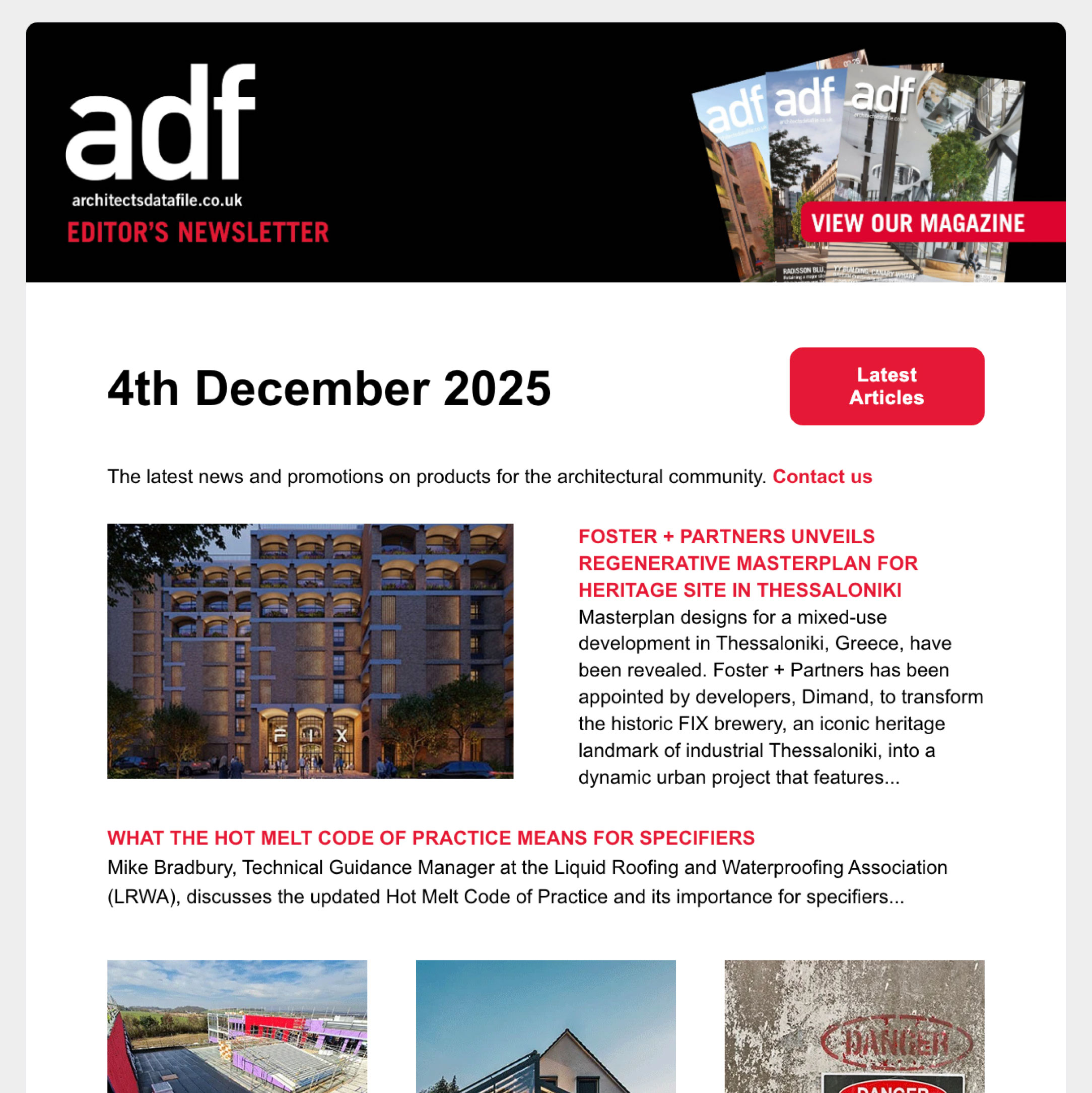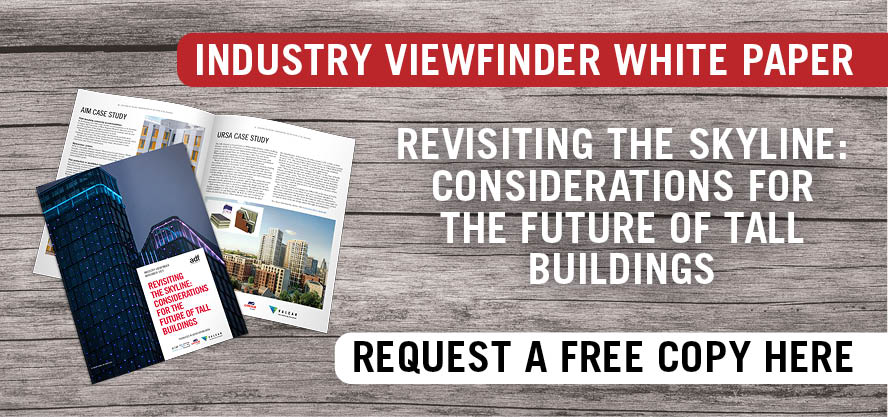Alongside the particular goals of a housing scheme for the Borough of Kensington and Chelsea, its proximity to Grenfell Tower intensified the need for extensive collaboration with local stakeholders. Roseanne Field reports on how HNW Architects successfully delivered PRP Architects’ richly detailed design.
The Royal Borough of Kensington and Chelsea (RBKC) is currently embarking on a new homes delivery programme which will see it deliver a total of 600 homes across the borough, including a minimum of 300 social rent homes as well as open market homes to rent and a variety of community and employment facilities.
The phased programme, named ‘New Homes, Safer Homes’, saw Phase 1 completed at the end of 2024 and comprised three projects, including Acklam Road. RBKC identified potential plots within the borough which would be developed within the programme; Plots 5 and 6 on Acklam Road were chosen as “key sites” for Phase 1, with RBKC leading the initiative and appointing Morgan Sindall as contractor on the project which comprises a total of 32 new apartments.
The homes developed under the scheme were built to a high standard, with prioritisation of high insulation levels, a “careful” selection of construction materials and methodology, and installing heating and hot water systems that utilise renewable energy in order to both reduce energy bills, and help the council work towards zero carbon objectives.
Located less than a mile from Grenfell Tower, the Acklam Road project was progressed with a particularly sensitive approach as a result.
It was vital Morgan Sindall brought the right people on board to collaborate on the project, and with the outline design having been already developed, the contractors appointed HNW Architects to deliver the project from Stage 3 through to completion. “Our role involved ensuring design continuity while coordinating with RBKC, the NHBC and Building Control to meet strict safety and technical standards, while maintaining the strong architectural identity of the building,” HNW Architects explains.
The proposal was for the development to comprise a mix of social rent and open market apartments. The final decision on tenures was balanced between local housing needs and financial viability. The focus was, however, on “providing high quality, tenure-blind accommodation,” HNW Architects explains.
The 32 homes consist of 20 social rent apartments and 12 open market apartments, all of which are accessed via a single shared entrance and communal spaces. Four of the social rent homes are also fully wheelchair accessible. While the open market homes were necessary for financial viability, RBKC wanted to prioritise the number of social rent units to “address local housing demand, ensuring the scheme delivers both affordable and high quality living environments.”
A collaborative effort
The project involved many stakeholders and collaborators, both for construction and safety purposes, and to ensure its impact on the surrounding community was a positive one. As well as the construction of homes, the project comprised community space on the ground floor to be utilised by the nearby Swinbrook Estate community to the west and the Al-Manaar Muslim Cultural Heritage Centre opposite.
RBKC, PRP Architects, Morgan Sindall and also HNW Architects engaged Swinbrook Residents’ Association and the Al-Manaar organisation, and both were involved in developing the site’s proposals. The Swinbrook Residents’ Association helped create an accessible space on the ground floor that they will utilise within their community, and the remaining community space on the ground floor.
As well as to best influence its impact on neighbouring communities, the project also necessitated collaboration on a more technical level, with residents’ safety of the utmost importance. “Our delivery role necessitated extensive collaboration with key stakeholders, including RBKC and the NHBC, and the planning, fire, and Building Control departments.” explained HNW.
Discussions were particularly focused on the fire, thermal, and acoustic elements of the homes, and “precision and attention to detail was critical, to ensure compliance without compromising design integrity,” says HNW. Any decision relating to these aspects was thoroughly researched and discussed with all necessary stakeholders before any final decisions were made.
Fire performance in particular was understandably a top priority. “The team were rigorous in sourcing, researching, and communicating compliance with specific requirements,” HNW Architects explains. “The resulting design and seamless incorporation of stringent fire safety measures demonstrates a commitment to precision and excellence in execution, exceeding performance standards.”
The final project includes an enhanced, commercial-grade sprinkler system installed in every apartment and throughout communal, non-residential areas. The design also allowed for two staircases serving some of the accommodation, and two emergency evaluation lifts, and a dry riser. Every apartment also features a high-end smoke detection and alarm system, and an evacuation alert system.
Responding to context
The initial design concept was developed by PRP Architects and was ultimately driven by the end goal of providing housing that would be high quality in both appearance and build, while being sympathetic to the surrounding area and meeting stringent requirements. Being a “constrained urban site,” the design needed to “balance contextual sensitivity with technical and regulatory requirements,” explains HNW Architects.
Making sure the development would sit in harmony with the surrounding buildings, particularly given the busy and already highly built up location, was particularly important. From our conversations with PRP Architects, “The concept took inspiration from the local built environment, particularly the distinctive brick textures of Al-Manaar, to ensure the development felt integrated within its surroundings,” HNW Architects explained. “The primary design inspiration takes cues from local building materials and features.”
In particular the decision to utilise a traditional red masonry facade was inspired by the Al-Manaar centre, with the bricks laid in a distinctive herringbone pattern. “The facade establishes a visual dialogue with the neighbouring Al-Manaar Centre, reinforcing a sense of place and grounding the building within its context,” HNW Architects explains. “This design element is carried throughout the external envelope, with its pattern density adapting based on its position on the elevation.”
As envisaged by PRP Architects, the red brick has been interspersed with rich brown bricks and white bricks. The brown bricks have been laid in a soldier course arrangement, to “create a cohesive visual language, aligning full height windows with raised cill openings for bathrooms and kitchens,” HNW Architects explains. “White brick surrounds and deep reveals add depth, while dark brown aluminium window frames and matching balustrades create a refined, cohesive finish.”
As well as neatly tying the building to its surroundings and contributing to the desired high quality finish, the materials were also chosen for their resilience and non-combustibility. “The material palette balances durability, fire safety and aesthetics,” HNW Architects explained.
As well as the nearby buildings, the development’s proximity to the elevated Westway A40 dual carriageway also had to be considered during the design stage. Acoustic performance, air quality and fire safety all came into play in relation to this, ultimately “shaping both the facade and internal layouts,” explains HNW Architects.
Outdoor spaces
Another key factor which influenced the design was the need for outdoor amenity space – often hard to come by in such central locations – resulting in the inclusion of a third floor podium garden. “The design prioritises occupant welfare through features such as the winter gardens and fully accessible podium garden, offering residents a tranquil retreat and place to interact with neighbours,” says HNW Architects.
The garden – which was considered to be a “vital outdoor retreat” – includes “thoughtful” landscaping alongside ornamental seating, benches, and tables for socialising and dining, and play elements for young children, to create a “welcoming, user-friendly outdoor space.” There are also raised metal planters and timber seating which add to the garden’s character, and enhance biodiversity. The decision to situate the garden on the third floor was influenced by the need to optimise land use.
Tenure-blind form
The overall final volume of the building was another decision that was meticulously considered, weighing up the potential of the site with planning, environmental and spatial considerations. A townscape study was undertaken by PRP Architects, which assessed a total of five massing options. The study considered elements such as structural needs, MEP, fire safety, residential service needs, rights of light and overshadowing.
In the end an eight storey form was decided upon, stepping down to the north west to transition more seamlessly to the neighbouring homes, and increasing at the opposite south east end to create a visual landmark from the Westway road. “Chamfered elevations orient dwellings away from traffic, enhancing frontage and access to a communal roof garden.“ At ground level, setbacks allow for soft landscaping, defensible spaces, and a future pedestrian route, while the enclosed winter gardens provide acoustic and air quality protection.”
It was an important element of the design that the building – including communal areas and the apartments themselves – be tenure-blind. The ground floor residential lobby is just that, and “activates the street corner,” explain HNW Architects, “while the single storey replacement community space on the southern corner benefits from multiple aspects.” Active frontages were a priority, providing natural surveillance, and it was also important that the community spaces be flexible and complement the Al-Manaar Centre.
Necessary residential services, such as refuse, cycle storage and the substation were “carefully integrated” to minimise their impact visually.
The apartments are a mix of one-, two-, and three-bedrooms, all with a fully enclosed balcony or winter garden. The family sized homes were mostly designated for social rent, responding to local demand. All three-bedroom apartments feature ensuites, as do the majority of the two-beds. There are two stair cores which serve the lower levels, up to the residents’ terrace on the third floor. Meeting new regulations, there are two lifts – one of which is for firefighters – and these offer access to all floor levels including the wheelchair accessible apartments. “Private winter gardens enhance acoustic comfort for all homes, shielding them from the elevated Westway,” HNW Architects adds.
Prioritising sustainability
While a high quality design and fire elements were of the utmost importance, that’s not to say sustainability factors fell by the wayside. In fact there are a “suite of environmentally conscious measures,” HNW Architects explain, aligning with RBKC’s “commitment to green building practices, and ensuring the building becomes increasingly sustainable with the greening of the grid.” The council’s “green commitment” has seen it fitting all new homes with double glazing, to help “lead the transition to net zero.”
The design and construction of the building utilised a fabric first approach. High levels of both insulation and airtightness were integrated into the construction, and thermally-efficient windows and doors were installed to both minimise energy loss while reducing running costs for residents. In order to reduce waste and lifecycle costs, materials were carefully chosen based on their durability and longevity. The building also utilises air source heat pumps, in order to reduce the use of fossil fuels.
A challenging build
As well as the elevated Westway road, the site is also near multiple tube lines, making the construction process “notably challenging,” says HNW Architects. This again meant collaboration between all involved parties – including the contractor, civil and structural engineers, Transport for London and Network Rail. This close collaboration was crucial, particularly during the groundworks phase of the project, but not only to ensure the build progressed as smoothly as possible. HNW Architects explains: “This coordination was essential to ensure compliance with underground asset protection requirements.”
The confined, urban site also presented logistical challenges. Any potential disruption to neighbouring properties needed to be minimised, and the small site meant the construction needed to be meticulously managed and organised. For example, delivery schedules were organised so that Friday prayer times at the Al-Manaar centre were avoided, as the road can get busy.
While the design made the most of the space available, this consequently meant there was limited room available on the site for material storage and welfare facilities during construction. “To address this, construction began above the double-height ground floor, with first floor masonry support angles providing structural stability for the brickwork above,” explains HNW Architects. “This approach enabled the creation of sheltered storage space for materials, ensuring the smooth progression of the project despite space constraints.”
Despite the challenges, construction of the project went well, beginning in summer 2022 and finishing in 2024. To further the positive impact on the local area, contractor Morgan Sindall created a new kitchen for the nearby Golborne Youth Centre, arranged local education events, and hosted apprentices and a variety of work experience placements on the project.
The project was officially opened in September 2024 by Deputy Leader Councillor Kim Taylor-Smith who commented that the project is a “great example of our commitment to providing social rent homes for our residents and ensuring they are able to stay in our borough. It’s good to see that despite the challenging economic climate, we are delivering homes to those who need them most in our community.”
Acklam Road has already received high praise, including winning ‘Best Affordable Housing Development – Less Than £20m’ at the 2024 Inside Housing Awards. “The response has been overwhelmingly positive, with praise from both the client and the local community,” says HNW Architects. “Recognised for its thoughtful design and attention to detail, the scheme has been celebrated for seamlessly integrating with its surroundings while delivering high quality, sustainable homes.”
Positive feedback has included praise for its role in addressing local housing needs – providing social rent homes where they’re needed – and enhancing local community spaces. The collaborative approach has also been applauded, along with the team’s commitment to minimising potential disruption during construction. Councillor Sof McVeigh commented that the scheme is “beautifully designed, with such attention to detail,” and RBKC project manager Alekhya Yalamanchili said it “sets a new standard for high quality, sustainable housing in urban settings.”
Summarising his experience on the project, Morgan Sindall project director Lee Askey said, “Working with HNW Architects, the award-winning Acklam Road development has been an exciting project for us. Not only has it created many social rent homes but it will also provide the local community with a variety of valuable new spaces.”
Project Factfile
- Client: RBKC
- Concept architect: PRP Architects
- Contractor: Morgan Sindall
- Delivery architect: HNW Architects
- Fire Engineer: Osborn Associates
- Structural & civil engineer: Engineers HRW
- MEP engineer: DBS
- Groundworks & twinwall system: JP Dunn
- Landscape architect: The Terra Firma Consultancy
- Acoustician: Sweco
- Brickwork facades: Lee Marley Brickwork
- Masonry support: ACS
- Roofing: Bauder
- External Doors, Windows & Curtain Walling: Leay
- Balustrading & Wind Posts: Structural Stairways



